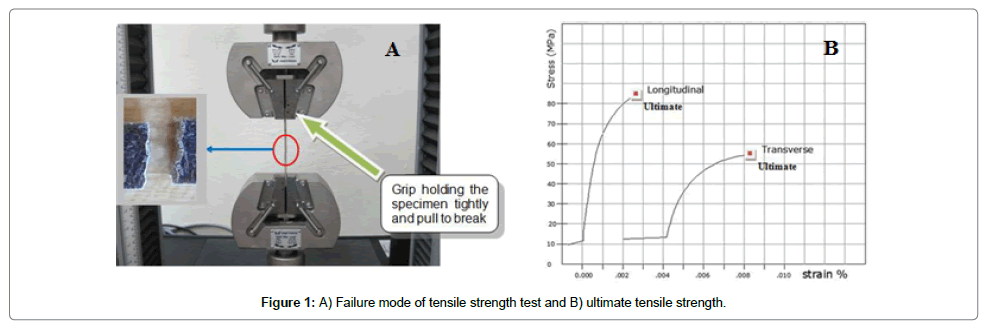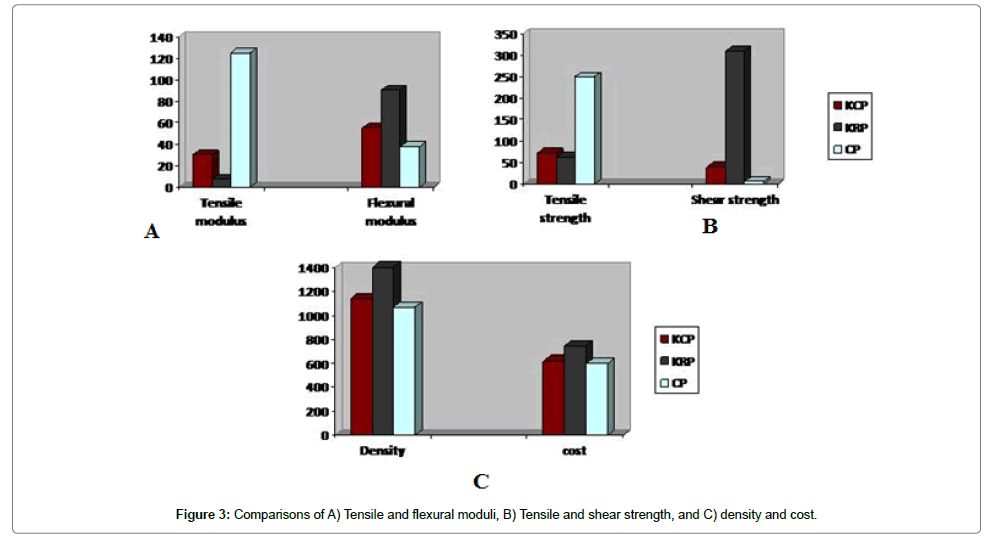Research Article Open Access
Compatible Kenaf Composites with the Rapid Manufacturing Concept of Prefab Building Components
Golnar Kiani1*, Rahinah Ibrahim2 and Kalinah31Institute of Forestry and Forest Products, University Putra Malaysia, 43400, UPM Serdang, Selangor, Malaysia
2Faculty of Art and Architecture, University Putra Malaysia, 43400, UPM Serdang, Selangor, Malaysia
3Institute of Forestry and Forest Products, University Putra Malaysia, 43400, UPM Serdang, Selangor, Malaysia
- *Corresponding Author:
- Golnar Kiani
Institute of Forestry and Forest Products
University Putra Malaysia, 43400
UPM Serdang, Selangor, Malaysia
Tel: +60172921213
E-mail: Golnar.kiani@gmail.com
Received Date: September 18, 2016; Accepted Date: February 06, 2017; Published Date: February 12, 2017
Citation: Kiani G, Ibrahim R, Kalinah (2017) Compatible Kenaf Composites with the Rapid Manufacturing Concept of Prefab Building Components. J Archit Eng Tech 5: 183. doi: 10.4172/2168-9717.1000183
Copyright: © 2017 Kiani G, et al. This is an open-access article distributed under the terms of the Creative Commons Attribution License, which permits unrestricted use, distribution, and reproduction in any medium, provided the original author and source are credited.
Visit for more related articles at Journal of Architectural Engineering Technology
Abstract
Although many scholars have developed natural fibres as reinforcements for industrial composite materials, the available information regarding these natural fibres is insufficient. For rapid manufacturing (RM) systems and products, the main materials used are thermoplastic materials, epoxy resin, acrylonitrile butadiene styrene plastic, and polyester materials. Natural and biodegradable composites provide important environmental advantages to the automotive industry, and sustainability, eco-friendliness, and obtaining green chemistry materials are the main objectives for the development of industrial materials, products, and systems.
Biocomposites may be a viable substitute for glass fibre-reinforced composites in automotive by-products and partial building applications. However, to obtain stronger products, hybridisation of these so-called natural fibres with other fibres is necessary. Biocomposites employ polymers as matrices, resulting in lighter, stronger, and more costeffective products that, at the same time, can be melted, sintered, or solidified, similar to RM systems.
The combination of Kenaf bast fibres, a type of natural fibre, with polymer matrices results in satisfactory performance that can compete with synthetic fibre composites. However, the RM process of the fibre composites requires special attention and investigation. The present study aimed to evaluate the effect of special features of RM on Kenaf/carbon hybrid composites by simulating processing steps and assessing the resulting properties. The tensile and shear strengths of the end products were of reasonable values compared with carbon or Kenaf/polymer matrices.
Keywords
Sustainable biocomposites; Hybrid composite; Polymer matrix; Kenaf bast; Carbon/Kenaf fibre reinforcement
Introduction
Various types of materials are used in the house construction industry depending on the process to be used, the specifications of instruments, or the design employed [1]. Currently, the materials used in rapid manufacturing (RM) for considerable parts of buildings are neither biodegradable nor eco-friendly [2]. Although the main materials in use for rapid prototyping system include thermoplastic materials, epoxy resin, acrylonitrile butadiene styrene plastic, and polyester materials [3], many scholars have made efforts to develop biofibres as fillers and composite reinforcements for industrial building systems. Materials currently in use in RM are limited to those that can be sintered or melted and solidified quickly [4]. The problem with using polymeric materials lies mainly in their price and non-ecofriendliness, both of which make the system inappropriate for adoption in the construction field [2]. Providing an eco-friendly material with cost-effective components can allow the use of such systems within the construction industry.
Kenaf fibres can be used in large quantities as excellent reinforcing fillers in plastics and in thermoplastics, such as polypropylene (PP), for their many unique properties [5] and lower cost. Moreover, Kenaf, as a natural fibre composite, has been shown to perform better in some mechanical activities, such as flexural testing, compared with a number of other natural fibres [6].
A new generation of materials, such as fibre-reinforced plastics and composites, is believed to exhibit many advantages over conventional sources of steel, polymer-based materials, and, to some extent, concrete [7].
The present study focuses on Kenaf-based composites for structural applications that can comply with the most advanced features of industries by means of RM systems for buildings. The main objective is to achieve layer by layer object production based on concepts of selective laser sintering (SLS).
Compression moulding employment
The SLS of materials involves producing parts layer by layer, generating whole components, and providing heat (by laser beam) to melt the matrix to fuse particles together [8]. These special characteristics affect the porosity and strength of the end products, which mainly focuses on the placement of powdered materials layer by layer, and the effects of the process on the mechanical properties of the resulting product.
Experimental Methods
Material preparation
Kenaf basts and carbon fibres were ground separately into short fibres using a Pulverisette from Universiti Putra Malaysia INTROP 3 (0.5 mm) and sifted through a 0.3 mm sieve. Kenaf fibres were then immersed in water and dried for 48 h at room temperature. The dried fibres were heated in an oven for 1 h at 120°C as suggested by previous scholars [7]. Polyester powder was ground to 0.5 mm and sifted through a 0.3 mm sieve. The sieved polymer was dried in the oven at 120°C for 4 h and set aside. The prepared fibres and matrices were blended in the proportions of 45% Kenaf, 5% carbon, 3% polyester, 45% PP, and 2% maleic anhyride additive. The materials were blended using a Brabender blending machine run for 10 min at 170°C and 50 rpm. Afterwards, the compounds were powdered into 0.05 mm particles by cryogenic grinding. Several batches of the prepared powder mixture were set aside to produce 15 samples (15 cm x 15 cm).
Composite compression moulding sample preparation
A mould was precoated with a non-stick mould release agent, and the machine was preheated to 160°C (Limited, 2005). The powdered compound was then moulded carefully into the compartment, preheated for 7 min, pressurised under 50 MPa for 10 min, cooled for 3 min, and then finally removed from the machine to allow cooling at room temperature for 24 h.
Property measurements for compressed moulded composites
Adherence to specific standards and associated parameters was required during the testing proper. American Society for Testing and Materials (ASTM) standards were followed in the current study. The prepared composites were removed from the mould and cut according to ASTM D638 for tensile strength testing and ASTM D3846 for shear strength testing. In total, three to four specimens were cut from three composite plates for various mechanical tests and measurements. For each test, 10 samples were provided and measured. The measurements were conducted in two directions of longitudinal (0°) and transverse (90°) orientation. The Archimedes method, in which deionised water is used as the immersion and infiltration liquid, was applied to measure the bulk density of each test specimen (Table 1).
| Property | Description | ValueGr/cm3 | Standard deviation | Coefficient of variation | Design allowable |
|---|---|---|---|---|---|
| ρ | Density | 1.14 | ---- | ---- | |
| E11 | Longitudinal Young’s modulus(GPa) | 30.2 | 8.28 | 0.27 | 10.7 |
| E22 | Transverse Young’s mModulus(GPa) | 6.9 | 0.45 | 0.065 | 5.84 |
| Xt | Longitudinal tensile strength (MPa) | 72.58 | 16.22 | 0.22 | 34.38 |
| Yt | Transverse tensilestrength (MPa) | 40.1 | 11.34 | 0.28 | 13.39 |
| G12 | Longitudinal in-plane shear modulus (GPa) | 9.92 | 1.19 | 0.12 | 7.11 |
| G23 | Transverse in-plane shear modulus (GPa) | 8.46 | 6.8 | 0.807 | 0.69 |
| Sc | Shear strength (Mpa) | 40 | 4.1 | 0.1025 | 30.34 |
Table 1: Calculated mechanical properties derived from tensile, compression, and flexural tests.
Results and Discussion
The failure mode in the tensile tests occurred through fibre and matrix breakage. Fibre pull-out was also observed in the present study. When failure of the specimen occurred, the test was stopped and the related data were obtained (Figures 1 and 2).
The specific Young’s modulus and specific strength of the composites constituted the comparison criteria, while the critical factor for the composites was the tensile property. As shown in Table 2, the specific strength of the biocomposite is greater than the reported strength of Kenaf/PP fibre composites obtained by previous researchers. Such an improvement is attributed to the incorporation of carbon fibres into the composite.
| Description | Kenaf/PP50/50 | Carbon/PP50/50 | K/C/PP50/50 |
|---|---|---|---|
| Tensile strength (MPa) | 62 | 2495 | 72.58 |
| Tensile modulus (GPa) | 7.7 | 125-150 | 30.2 |
| Flexural modulus (MPa) | 3.6 | 37.92 | 19.88 |
| Shear strength (MPa) | 6.36 | 310 | 40 |
| Density (Kg/m3) | 1400–1500 | 1070 | 1140 |
| Cost $/kg | 6 | 7.5 | 6.2 |
Table 2: Comparison of the properties of Kenaf/PP and carbon/PP composites.
The figures illustrate that the composite exhibited properties in good agreement with common structural materials, such as carbon fibre-reinforced plastic, and even better than those of Kenaf/ PP composites (Figure 3A-3C). The results also show satisfactory properties compared with concrete as a general structural material. The composite can produce curvalinear forms without imposing extremely high costs. Hence, it can be claimed that the composite can be used for a wide range of structural purposes provded that the total distributed stress and strain loads do not exceed its design allowances.
Conclusion
In the current study, we aimed to evaluate the mechanical properties of Kenaf/carbon/PP fibre composites fabricated from randomly scattered fibres.
First, the process (heating and compressing) was performed well below 180°C to avoid fibre degradation. Control of the moulding process (time, temperature, and press) was crucial to reduce fibre damage. During determination of the processing parameters that needed to be adjusted to each thermoplastic polymer, the rheological and thermal properties of neat polymers must be considered. The second part of the study focused on the mechanical behaviour of the polymeric matrix composites reinforced by the hybrid fibres. With volume fractions of 45% Kenaf and 5% carbon fibres, satisfactory performance levels were obtained for the Kenaf/carbon/PP fibre biocomposites.
The substitution of PP by Kenaf/carbon/PP fibre biocomposites for RM may yield a stronger product. The results are very encouraging for the development of biocomposites for structural applications. Complementary studies, such as the application of the material under an RM procedure and adoption of different fibre designs and matrices, will be conducted in the future. The standard deviation and allowable stress design were calculated for further design considerations and comparison between expected loads, thus allowing calculation of the design allowance.
References
- Irazagh AA, Iyengar H, Sinn R, Zils J (2005) Designing Frank OGehrys Curves at the Millennium park Chicago, Illinois, USA. Steel structures, pp: 173-179.
- Akovali G (2005) Polymer in Construction. Crewe IsmithersRapra Publishing.
- Dickenson NH (2003) Analysis of rapid manufacturing-using layer manufacturing processes of production. Mechanical Engineering Science pp: 31-39.
- Alter L (2008) Fractal Table Can Only Be Made By Rapid Prototyping.
- Ashori A (2008) Wood plastic composites as promising green-composites for automotive industries. Journal of Bio-resource Technology 99: 4661-4667.
- Nishinoa TKH (2003) Kenaf reinforced biodegradable composite. pp: 1281-1286.
- Univ MS (2010) Kenafbastfiber bundle-reinforced unsaturated polyester composites. I process techniques for high Kenaffiber loading, Forest Products Journal.
- Salmoriaa GV (2008) Rapid manufacturing of PA/HDPE blend specimens by selective laser sintering: Microstructural characterization. Polymer Testing pp: 361-368.
Relevant Topics
- Architect
- Architectural Drawing
- Architectural Engineering
- Building design
- Building Information Modeling (BIM)
- Concrete
- Construction
- Construction Engineering
- Construction Estimating Software
- Engineering Drawing
- Fabric Formwork
- Interior Design
- Interior Designing
- Landscape Architecture
- Smart Buildings
- Sociology of Architecture
- Structural Analysis
- Sustainable Design
- Urban Design
- Urban Planner
Recommended Journals
Article Tools
Article Usage
- Total views: 2984
- [From(publication date):
April-2017 - Aug 23, 2025] - Breakdown by view type
- HTML page views : 2110
- PDF downloads : 874



